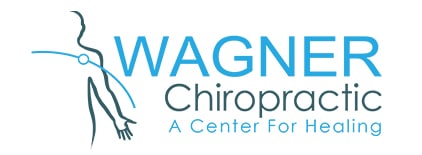Cavities of the Spine: Defining Degenerative Joint Disease

The reason I define degenerative joint disease (DJD) as ‘cavities of the spine’ is because, similar to a cavity, it is a slow breakdown that causes pain and problems toward the end of the disorder. DJD is described as the gradual deterioration of cartilage within joints. There are many types of degenerative joint disease, but adult onset rheumatoid arthritis and osteoarthritis are two of the most common types. Any joint of the body may be affected, although the weight-bearing joints of the body, in particular, such as spine, hips, and knees are especially susceptible.
DJD is primarily caused by the natural aging process, though it can be accelerated by factors like obesity, smoking, overexertion, sports injury, gender, associated diseases (infections, diabetes, rheumatoid arthritis, gout), genetic predisposition, and sub-optimal nutrition. DJD does not always exhibit symptoms with most people over 50 experiencing at least a mild degree of spinal joint degeneration which they don’t even notice. I often see it beginning in many patients in their 30s now that there are more smartphones and laptop computers that place more strain on the neck.
DJD affecting the neck and back is called facet disease or spinal osteoarthritis. Here, the joints connecting one vertebra to the next start to decay. They are especially vulnerable to degradation since they are involved in so many movements while also bearing the body’s weight. When the cartilage wears away, the back of the spine joints called facet joint surfaces grind against each other causing inflammation, pain and stiffness, and causing the formation of bone spurs(2).
Similarly, changes to the end plates of the vertebra build bone spurs or other anatomical abnormalities press on spinal nerves. The location of symptoms depends on the position of the spinal joints affected. The neck causes head, neck and arm/hand issues. The mid-back causes pain in between the shoulder blades. The low back can cause lower back and buttock/leg pain and problems.
Symptoms in DJD patients vary and may include:
- pain
- tenderness
- swelling
- stiffness
- decreased range of motion
- grinding feeling of bone rubbing against bone
- formation of boney enlargements or bone spurs on the joint margins pressing against nerves and causing discomfort of pain, numbness, and weakness
Osteoarthritis (OA) is the most common DJD affecting more than 25% of the population over 18 years of age. It is a major cause of pain and disability in adult individuals. It is most common over the age off 40 and worsens in post-menopausal women after age 45. Major symptoms include chronic pain, joint instability, joint space narrowing and stiffness.
Research continues to prove that regular chiropractic adjustments every two to six weeks on a consistent basis usually shows a decrease in the rate of OA.
“There is substantial evidence that osteoarthritis can be reversible… cartilage has the innate ability to repair itself if given the correct conditions.”
- LUKE R. BUCCHI, PH. D., ACA JOURNAL OF CHIROPRACTIC
In addition to chiropractic adjusting techniques which positively affect cartilage between the joints, at Wagner Chiropractic in Eustis we regularly realize marked improvements in our patients with DJD by incorporating additional safe and effective therapies which may include:
- vibrating cervical traction packages for neck or low back curve to be re-established
- class III and class IV laser therapy program(5)
- interferential current therapy(6)
- massage therapy
- whole body vibration with weighting for structural correction
- home exercise for stretching and strengthening
- the membrane of the sac containing the fluid which lubricates the joint
- extra growths of bone that pose the risk of compressing nearby spinal nerves
- chondro: cartilage
- glycosaminoglycan: any of a group of compounds occurring chiefly as components or shock absorbing lubricants of connective tissue
- sometimes also referred to as low level light therapy or photobiomodulation (PBM)–a low intensity light therapy
- stimulates muscles to help relieve deep tissue pain through penetration that can be adjusted to stimulate nerve fibers for increased blood flow
Endnotes:
Chen, Di, et al. “Osteoarthritis: toward a comprehensive understanding of pathological mechanism.” Bone Research, U.S. National Library of Medicine, 17 Jan. 2017,
https://www.ncbi.nlm.nih.gov/pmc/articles/PMC5240031
Berkson, D L. “Osteoarthritis, Chiropractic, and Nutrition: Osteoarthritis Considered as a Natural Part of a Three Stage Subluxation Complex: Its Reversibility: Its Relevance and Treatability by Chiropractic and Nutritional Correlates.” Current Neurology and Neuroscience Reports, U.S. National Library of Medicine, Dec. 1991, www.ncbi.nlm.nih.gov/pubmed/1809855.
Organization, Chiropractic Resource. Reversal of Osteoarthritis by Nutritional Intervention, https://chiro.org/nutrition/FULL/Reversal_of_Osteoarthritis.shtml.
OFFICE HOURS
Monday
7:15am - 4:30pm
Tuesday
7:15am - 4:30pm
Wednesday
Closed
Thursday
7:15am - 4:30pm
Friday
7:15am - 3:30pm
Saturday
Closed
Wagner Chiropractic
2775 South Bay Street
Eustis, FL 32726
(352) 589-5443



